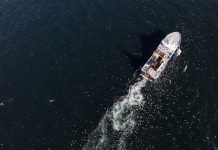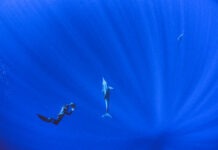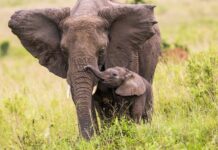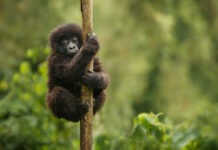Bare Essentials very own Nell Stephenson, professional ultra-athlete and paleo nutrition columnist heads for the sunny shores of Hawaii today, to compete in this years Ford Ironman World Championship, taking place on Saturday, Oct. 8, in Kailua-Kona, Hawaii.
Wishing her all the best – we will be watching as she takes on this prestigious endurance challenge. PLUS covering her training techniques, in a two part special featured in our Nov/Dec issue of Bare Essentials. So, you too can learn the secrets of an ultra-athlete, training motivation and method!
Each year, the Ford Ironman World Championship comes replete with bodies of steel, some of the fittest racers in the sport testing the strength and will of the human body to the limit, age groupers from 18 to 80, stories that warm the human heart, and, without fail, enough drama to stoke the imagination for years to come.
The inaugural “Hawaiian IRON MAN Triathlon” was conceptualized in 1977 as a way to challenge athletes who had seen success at a local biathlon. San Diego-based John Collins proposed combining the three toughest endurance races in Hawaii – the 2.4-mile Waikiki Roughwater Swim, 112 miles of the Around-O’ahu Bike Race and the 26.2-mile Honolulu Marathon – into one event.
This year’s theme, Ko Aloha La Ea – Keep Your Love, gives the 1,800 entrants a way to live on race day, and perhaps, beyond.
Ko Aloha La Ea reflects a significant moment in Hawaiian history: In 1819, King Kamehameha I, the first king to unify the Hawaiian islands, died, and his son, Liholiho was named King Kamehameha II.
At the same time, the traditional lifestyles of the Hawaiian people were undergoing rapid change, in part because of the increasing exposure of the islands to foreign traders and settlers. Liholiho was immediately at odds with his cousin, High Chief Kekuaokalani about how to lead the Hawaiian people. Kamehameha II favored abolishing the old religious ways of the islands, known as the Kapu system, while Kekuaokalani fought to retain the Kapu system. The old way of life was in peril, and it caused much conflict within the islands.
In 1820 on the south end of Ali’i Drive, in Keauhou, Hawaii, this conflict between old ways and new resulted in the Battle of Kuamo’o. Before the battle began, Kekuaokalani’s wife, High Chiefess Manono, expressed her desire to join in the fight. Kekuaokalani discouraged her from joining the battle, but made a platform for her at the battle site so that she could watch the fighting unfold.
The Ironman Kona race office explanation of the theme tells us what happens next. As High Chiefess Manono looked on, Kekuaokalani was killed. The Princess went to her husband, “covered his face, picked up his spear and charged into battle chanting “Ko aloha la ea, Ko aloha la ea” – Keep your love, keep your love.”
Ultimately, King Kamehameha II’s soldiers defeated the forces of Kekuaokalani. High Chiefess Manono was killed in the fighting, along with hundreds of soldiers. The bodies of the soldiers were covered with rocks and remain at the battlefield.
“Today, the Kuamo’o Battlefield and the Lekeleke Burial Ground is where heartbreak became a part of history as well as a message to live by: No matter what obstacles come, keep your love. No matter what suffering you face, no matter who you are or where you come from, with love you can surmount anything.
“This historical and significant landmark continues to represent change, passion, principle, excellence, love of life and love for others.”
Read the 2011 Athlete Guide.
Watch the event unfold via IronmanLIVE.
Get the latest News, Photos and Podcasts from Ironman.
Train with Nell, leverage her experience and expertise to attain optimal performance and vitality!

















